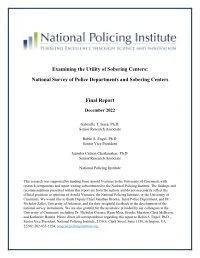By Aaron Chalfin and Felipe Goncalves
How do public sector workers balance their pro-social motivations with private interests? In this study of police officers, we exploit two institutional features that change the implicit cost of making an arrest: arrests made near the end of an officer’s shift are more likely to require overtime work, and arrests made on days when an officer “moonlights” at an off-duty job after their shift have a higher opportunity cost. We document two consequences for officer behavior. First, contrary to popular wisdom, officers reduce arrests near the end of their shift, and the quality of arrests increases. We argue that these patterns are driven by officer preferences rather than departmental policy, fatigue, or incapacitation from earlier arrests. Second, officers further reduce late-shift arrests on days in which they moonlight after work, suggesting that they are, in fact, modestly responsive to financial incentives. Using these results, we estimate a dynamic model that identifies an officer’s implied trade-off between private and pro-social motivations. We find that police officers exhibit high pro-social motivation towards their work. In contrast to prior research showing that law enforcement outcomes are sensitive to financial incentives at an institutional level, the behavior of individual officers — the “street-level bureaucrats” who enforce the law — is not meaningfully distorted by monetary considerations.
Unpublished paper, 2020. 74p.





















